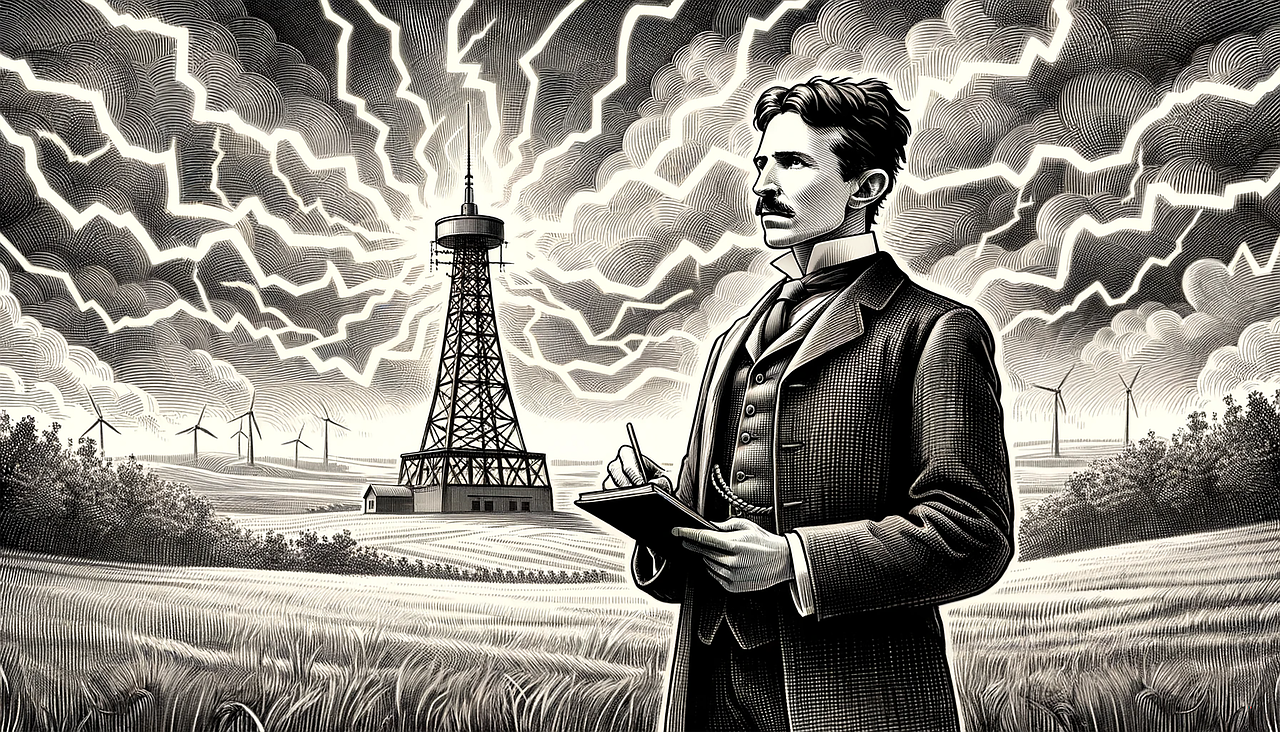1. Early Life and Background |
1.1 Birth and Family |
| Born on July 10, 1856, in a small village in Smiljan, which was part of the Austrian Empire (modern-day Croatia), Nikola Tesla was destined for greatness from the very start. His father, Milutin Tesla, was an Orthodox priest and a writer with a knack for poetry and philosophy, while his mother, Georgina Đuka Tesla, was a gifted inventor in her own right, although she never held any formal education. She crafted small household appliances that sparked young Nikola’s curiosity about the world of invention. |
1.2 Education and Early Interests |
| Tesla’s fascination with science and engineering began at a young age. His education started at the Higher Real Gymnasium in Karlovac, where he displayed a photographic memory and an insatiable curiosity for the world around him. It was here that he first encountered the works of Edison and discovered his passion for electricity. Tesla went on to study electrical engineering at the Austrian Polytechnic in Graz. Despite being an exceptional student, he never completed his degree due to a falling out with his professors. However, this setback did not dampen his spirit. In fact, it only fueled his desire to understand the mysteries of electricity. |
2. The Journey to America |
2.1 The Decision to Emigrate |
| In 1884, Tesla made the bold decision to leave Europe and head for America, a land he believed held endless possibilities for someone with his unique talents. Armed with little more than a letter of introduction to Thomas Edison and a head full of revolutionary ideas, Tesla embarked on a journey that would change the course of his life—and the world—forever. |
2.2 Early Struggles in a New World |
| America was not the land of milk and honey that Tesla had imagined. The initial years were fraught with challenges, from cultural differences to financial hardships. Tesla began working for Edison, who was impressed by his talent but skeptical of his theories about alternating current (AC). This marked the beginning of a strained relationship between the two inventors, one that would culminate in a fierce rivalry. |
3. Invention of the Induction Motor |
3.1 The Birth of an Idea |
| Tesla’s most significant contribution to the world of electricity came in the form of the induction motor, an innovation that stemmed from his deep understanding of alternating current. The idea struck him like a bolt of lightning—he envisioned a motor that would eliminate the need for commutators, brushes, and mechanical devices, allowing it to run on AC power. |
3.2 Presentation to the World |
| Tesla’s induction motor was nothing short of revolutionary. When he presented it to the world in 1888 at the American Institute of Electrical Engineers, it was met with awe and skepticism alike. The motor promised a new era of electrical power, one that was safer, more efficient, and capable of powering the future. |
4.1 Tesla vs. Edison: The Rivalry |
| The War of Currents was more than just a battle between AC and DC power—it was a clash of titans, with Tesla and Edison at the helm. Edison was a staunch advocate of direct current (DC), which he had been developing for years. Tesla, on the other hand, championed alternating current (AC), which he believed was the future of electricity. The rivalry between these two inventors was as personal as it was professional, with each seeking to prove the superiority of their respective systems. |
4.2 AC vs. DC: A Clash of Titans |
| The debate over AC versus DC power became one of the most significant conflicts in the history of electrical engineering. Edison’s DC system was limited by its inability to efficiently transmit electricity over long distances, while Tesla’s AC system could do so with ease. Despite Edison’s efforts to discredit AC power, including public demonstrations that bordered on the macabre, Tesla’s system eventually won out, paving the way for the modern electrical grid. |
5. The Later Years |
5.1 From Fame to Obscurity |
| Despite his groundbreaking contributions, Tesla’s later years were marked by a gradual decline into obscurity. His obsessive focus on new projects, such as wireless energy transmission, often led him down paths that yielded little commercial success. Financial difficulties plagued him, and he spent his final years living in relative poverty, alone in a New York hotel room, feeding pigeons and dreaming of a world powered by his inventions. |
5.2 Final Contributions to Science |
| Even in his later years, Tesla’s mind remained as sharp as ever. He continued to file patents and work on new ideas, including the development of the Tesla coil, a device that would become a cornerstone of radio technology. Although many of his later inventions never came to fruition, they laid the groundwork for future innovations and cemented his legacy as one of history’s greatest inventors. |
6. Tesla's Legacy |
6.1 Innovations That Changed the World |
| Nikola Tesla’s legacy is evident in the countless technologies that power our modern world. From the alternating current that flows through our homes to the wireless communication systems that connect us, Tesla’s inventions have left an indelible mark on the fabric of society. His work in electrical engineering, radio, and even early concepts of robotics continues to inspire generations of inventors and scientists. |
6.2 The Man Behind the Genius |
| Beyond his inventions, Tesla was a man of deep intellect and boundless imagination. He was known for his eccentricities, such as his obsession with the number three and his aversion to pearls, but these quirks only added to the mystique surrounding him. |
in History
Sign in to leave a comment
